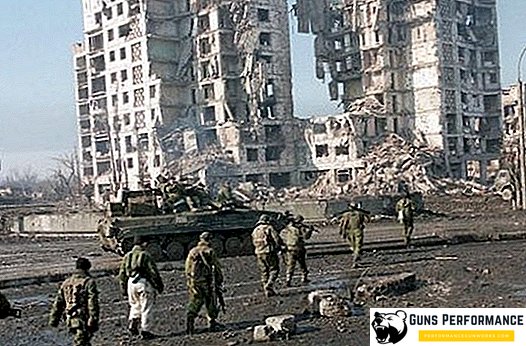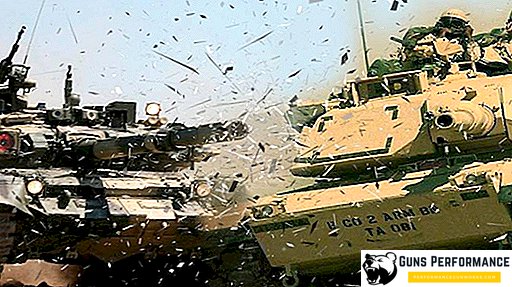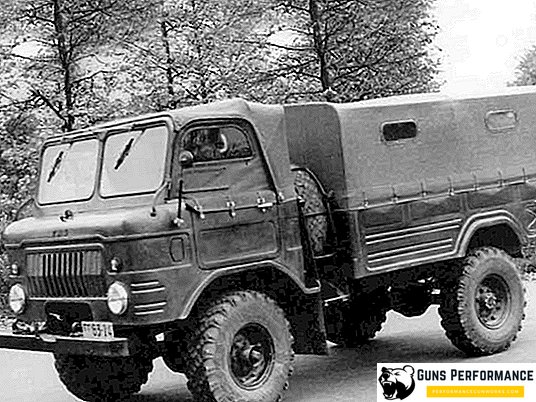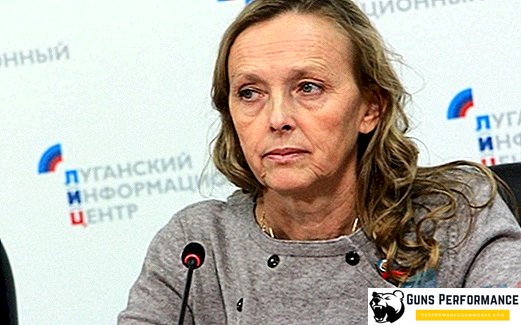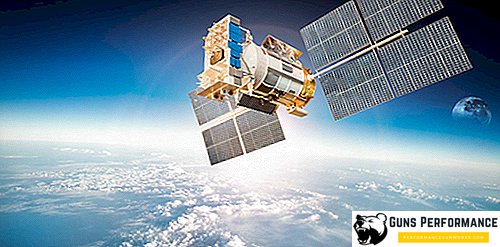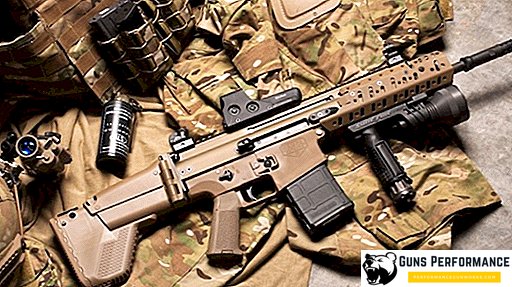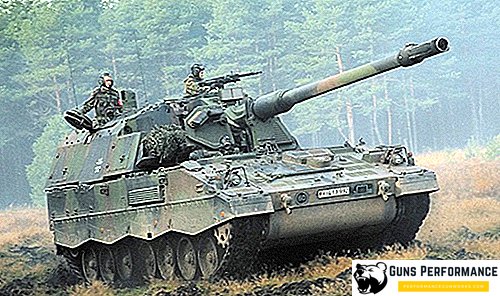The significance of the air force in the modern war is immense, and the conflicts of the last decades confirm this. The Russian Air Force is second only to the US Air Force in the number of aircraft. Russian military aviation has a long and glorious history; until recently, the Russian air force was a separate type of troops; in August last year, the Russian air force became part of the Air Force of the Russian Federation.
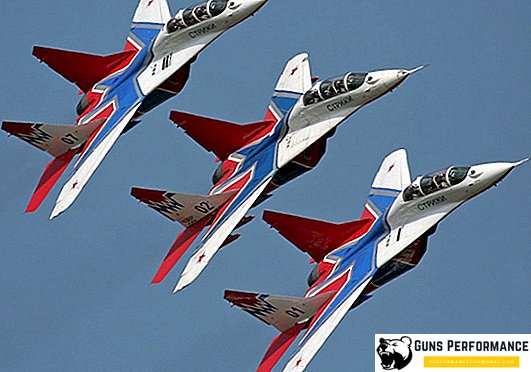
Russia is undoubtedly a great aviation state. In addition to the glorious history, our country can boast a significant technological reserve that allows you to independently produce military aircraft of any kind.
Today, Russian military aviation is not experiencing the simplest period of its development: its structure is changing, new aircraft technology is coming into service, generations are changing. However, the events of recent months in Syria have shown that the Russian Air Force can successfully carry out their combat missions in any conditions.
History of the Air Force of the Russian Air Force
The history of Russian military aviation began more than a century ago. In 1904, an aerodynamic institute was created in Kuchino, one of the creators of aerodynamics Zhukovsky became its leader. Scientific and theoretical works aimed at improving aviation technology were carried out within its walls.
In the same period, the Russian designer Grigorovich worked on the creation of the world's first hydroplanes. The first flight schools were opened in the country.
In 1910, the Imperial Air Force was organized, which lasted until 1917.
Russian aviation took an active part in the First World War, although the domestic industry of the time was significantly lagging behind other countries participating in this conflict. Most of the combat aircraft on which the Russian pilots of the time flew were made in foreign factories.
But nevertheless there were interesting finds and at domestic designers. The first Ilya Muromets multi-engined bomber was created in Russia (1915).

The Russian air force was divided into squadrons, which consisted of 6-7 aircraft. Detachments united in the air group. The army and the fleet had their own aircraft.
At the beginning of the war, aircraft were used for reconnaissance or for adjusting artillery fire, but very quickly they were used for bombing the enemy. Soon the fighters appeared, the air battles began.

The Russian pilot Nesterov made the first air ram, and a little earlier he performed the famous “dead loop”.
The Imperial Air Force was disbanded after the Bolsheviks came to power. Many pilots participated in the civil war on different sides of the conflict.
In 1918, the new government created its own air force, which took part in the civil war. After its completion, the country's leadership paid great attention to the development of military aviation. This allowed the USSR in the 30s after a large-scale industrialization to return again to the club of the leading aviation powers of the world.

New aircraft factories were built, design bureaus were created, flight schools opened. A whole galaxy of talented aircraft designers appeared in the country: Polyakov, Tupolev, Ilyushin, Petlyakov, Lavochnikov and others.
In the prewar period, the armed forces received a large number of new models of aviation technology, which was not inferior to foreign analogues: the Il-2 attack aircraft, MiG-3, Yak-1, LaGG-3 fighters, and the long-range TB-3 bomber.




By the beginning of the war, Soviet industry had time to release more than 20 thousand military aircraft of various modifications. In the summer of 1941, the factories of the USSR produced 50 combat vehicles a day, after three months the production of equipment doubled (to 100 machines).
The war for the USSR Air Force began with a series of crushing defeats - a huge number of aircraft were destroyed at border airfields and in air battles. For almost two years, German aircraft had dominance in the air. The Soviet pilots did not have the proper experience, their tactical methods were obsolete, like most of the Soviet aircraft.
The situation began to change only in 1943, when the industry of the USSR mastered the production of modern combat vehicles, and the Germans had to send the best forces to defend Germany from allied aviation raids.
By the end of the war, the quantitative superiority of the USSR air force became overwhelming. During the war years, more than 27 thousand Soviet pilots were killed.
During the Cold War, the USSR Air Force developed rapidly, in the 1980s, the Air Force had about 10,000 aircraft of various modifications in its arsenal. In the postwar period, a new type of aviation technology appeared - combat helicopters.
Fourth generation Su-27 and MiG-29 fighters were developed in the USSR, work began on the creation of the next generation fighter. But the collapse of the USSR put an end to many promising projects of the time. Technique of the USSR Air Force was divided between the former republics, where it became the basis of the national air force.

July 16, 1997 By a decree of the President of Russia, a new type of troops was formed - the Air Force of the Russian Federation. The structure of the new structure included air defense forces and the air force. In 1998, the necessary structural changes were completed, the General Staff of the Russian Air Force was formed, a new commander-in-chief appeared.
The Russian military aviation participated in all the conflicts in the North Caucasus, in the 2008 Georgian war, and in 2018, the Russian VKS were introduced into Syria, where they are currently located.
Around the middle of the last decade, the active modernization of the Russian air force began.
Modernization of old airplanes is being carried out, new equipment arrives in the subunits, new aircrafts are being built and old air bases are being restored. A fifth-generation fighter, the T-50, is in the final stages of development.

Significantly increased the monetary allowance of military personnel, nowadays pilots have the opportunity to spend enough time in the air and hone their skills, exercises have become regular.
In 2008, the air force reform was launched. The structure of the Air Force was divided into commanders, air bases and brigades. Commanders were created on a territorial basis and replaced the air defense and air force armies.
Structure of the Air Force of the Russian Air Force
Today, the Russian Air Force is part of the military space forces, the decree on the creation of which was published in August 2018. The leadership of the Russian Aerospace Forces is carried out by the General Staff of the Armed Forces of the Russian Federation, and the direct command is carried out by the Main Command of the Aerospace Forces. The commander in chief of the Russian military space forces is Colonel-General Sergei Surovikin.

The Commander-in-Chief of the Russian Air Force is Lieutenant-General Yudin, he is the Deputy Commander-in-Chief of the Russian Federation Air Force.
In addition to the air force, the space forces, air defense and missile defense units are part of the VKS.
The structure of the Russian Air Force includes long-range, military transport and army aviation. In addition, the Air Force included anti-aircraft, missile and radio troops. There are also special forces in the Russian Air Force that perform many important functions: provide reconnaissance and communications, engage in electronic warfare, rescue operations and protection against weapons of mass destruction. The Air Force also includes meteorological and medical services, engineering units, support units and logistics services.

The basis of the structure of the Russian air force is the brigade, air base and command of the Air Force of the Russian Federation.
Four commands are located in St. Petersburg, Rostov-on-Don, Khabarovsk and Novosibirsk. In addition, the Russian Air Force includes a separate command that directs long-range and military transport aviation.
As mentioned above, in size the Russian Air Force is second only to the United States Air Force. In 2010, the number of Russian air forces was 148 thousand people, about 3.6 thousand different units of aviation equipment were in operation, about 1 thousand more were in storage.
After the reform of 2008, the aviation regiments became aviation bases, in 2010 there were 60-70 such bases.
The following tasks are assigned to the air forces of Russia:
- reflection of enemy aggression in the air and outer space;
- protection against air strikes of military and state administration points, administrative and industrial centers, and other important infrastructure facilities of the state;
- defeating enemy forces using various types of ammunition, including nuclear ones;
- conducting intelligence operations;
- direct support of other species and genera of the armed forces of the Russian Federation.
Military aircraft of the Russian Air Force
The Russian Air Force includes strategic and long-range aviation, military transport and army aviation, which, in turn, is divided into fighter, attack, bomber, reconnaissance aircraft.
Strategic and long-range aviation is part of the Russian nuclear triad and is capable of carrying various types of nuclear weapons.
Tu-160 "White Swan". These machines were designed and built in the Soviet Union. The impetus for the creation of this aircraft was the development of the strategist B-1 by the Americans. Today, the Russian Air Force is armed with 16 Tu-160 aircraft. These military aircraft can be armed with cruise missiles and free-fall bombs. Whether the Russian industry will be able to adjust the serial production of these machines is an open question.

Tu-95 "Bear". This turboprop aircraft made the first flight during the life of Stalin. This machine has undergone a deep modernization, it can be armed with cruise missiles and free-fall bombs with both conventional warheads and nuclear ones. Currently, the number of operating machines is about 30.

Tu-22M. This machine is called the long-range supersonic bomber bomber. Tu-22M developed in the late 60s of the last century. The aircraft has a variable wing geometry. It can carry cruise missiles and bombs with a nuclear warhead. The total number of combat-ready machines is about 50, another 100 are in storage.

Fighter aircraft of the Russian Air Force are currently represented by Su-27, MiG-29, Su-30, Su-35, MiG-31, Su-34 (fighter-bomber) aircraft.
Su-27 - This is a front-line fighter, one of the first fighters of the fourth generation, released in the USSR. Today there are several modifications of this combat vehicle, their total number is about 360 cars.

Su-30 - This is a machine created on the basis of the Su-27. The fighter is equipped with powerful radio-electronic equipment and is capable of detecting air and ground targets at long distances, as well as target designation for other aircraft. The total number of Su-30s is about 80 units.

Su-35. This car is the result of a deep modernization of the Su-27, it can be attributed to the 4 ++ generation. The fighter has increased maneuverability and is equipped with sophisticated electronic equipment. Start of operation of the Su-35 - 2014 year. The total number of aircraft - 48 cars.

MiG-29. One of the first Soviet fighter of the fourth generation, has a large number of modifications, today in service with the Russian Air Force about 225 such aircraft.
MiG-31. High-speed long-range interceptor fighter. These machines in service with the Russian Air Force, there are 140 units. The MiG-31 is currently being upgraded, and it is planned to finish it by 2020.

Su-25 "Rook". The famous attack aircraft, created in the mid 70s of the last century. One of the best cars of its class in the world, the Su-25 participated in dozens of conflicts. Today, about 200 Rooks are in service, another 100 are in storage. The aircraft is being upgraded and will be completed in 2020.

Su-24. Variable wing geometry bomber, designed to overcome enemy air defenses at low altitude and supersonic speeds. Su-24 is an obsolete machine, it is planned to write off until 2020. 111 units remain in the ranks.

Su-34. The newest fighter-bomber. Now in service with the Russian Air Force is 75 such aircraft.

The transport aviation of the Russian Air Force is represented by several hundreds of different airplanes, overwhelmingly developed in the USSR: the An-22, An-124 Ruslan, Il-86, An-26, An-72, An-140, An-148 and others models.
Training aviation includes: Yak-130, Czech aircraft L-39 Albatros and Tu-134UBL.

Yak-130 - the only aircraft that was developed after the collapse of the USSR. The rest of the combat vehicles are more or less deep upgrades to Soviet vehicles.
Army aviation includes Mi-24, Mi-28, Ka-50, Ka-52, Mi-8, Mi-26, Ka-226 helicopters and the Ansat helicopter. From this list, the new machines are the Mi-28, Ka-50, Ka-52 and Ansat. The rest of the machine developed in the USSR. It should be noted that in the work on the modernization of old equipment.

The Ka-50 helicopter is removed from serial production. To date, about a hundred Ka-52 units and over one hundred Mi-28 Night Hunter helicopters have been delivered to the troops.

The Mi-24 helicopters (620 units) and Mi-8 (570 units) remain the most in service. These are reliable, but old Soviet cars that can be quite used for some time after a minimal modernization.
Unmanned aerial vehicles (UAVs). In recent years, the role of the UAV has increased significantly. In the USSR, this type of weapon was not given enough attention, so today Russia is noticeably lagging behind in this issue from the leading weapon states of the world.
There are several types of UAVs in service with the Russian Air Force: the Bee-1T, Reis-D and Outpost. The last device is the rather old Israeli UAI IA Searcher, which is produced in Russia under license from foreign components.

Prospects for the Russian Air Force
Currently, work is underway on the creation of several aircraft, some of them in the final stage.
The main novelty, which should soon come into service with the Russian Air Force and significantly strengthen them, is the Russian complex of the fifth-generation front-line aviation T-50 (PAK FA). The aircraft has already been repeatedly shown to the general public, and prototypes are currently being tested. The media appeared information about the problems with the T-50 engine, but there was no official confirmation of this. The first T-50 aircraft must arrive in the army in 2018.
Among the promising projects, the Il-214 and Il-112 transport airplanes, which should replace the outdated Ans, as well as the new MiG-35 fighter, are also worth noting.

In the near future, new machines are planning to supply the troops and helicopter builders: the Mi-38 and Ka-60 are in the final stages of testing.

Work began on the creation of a new Russian "strategist" (PAK-DA), but it is likely that we will see him only after 2020.



